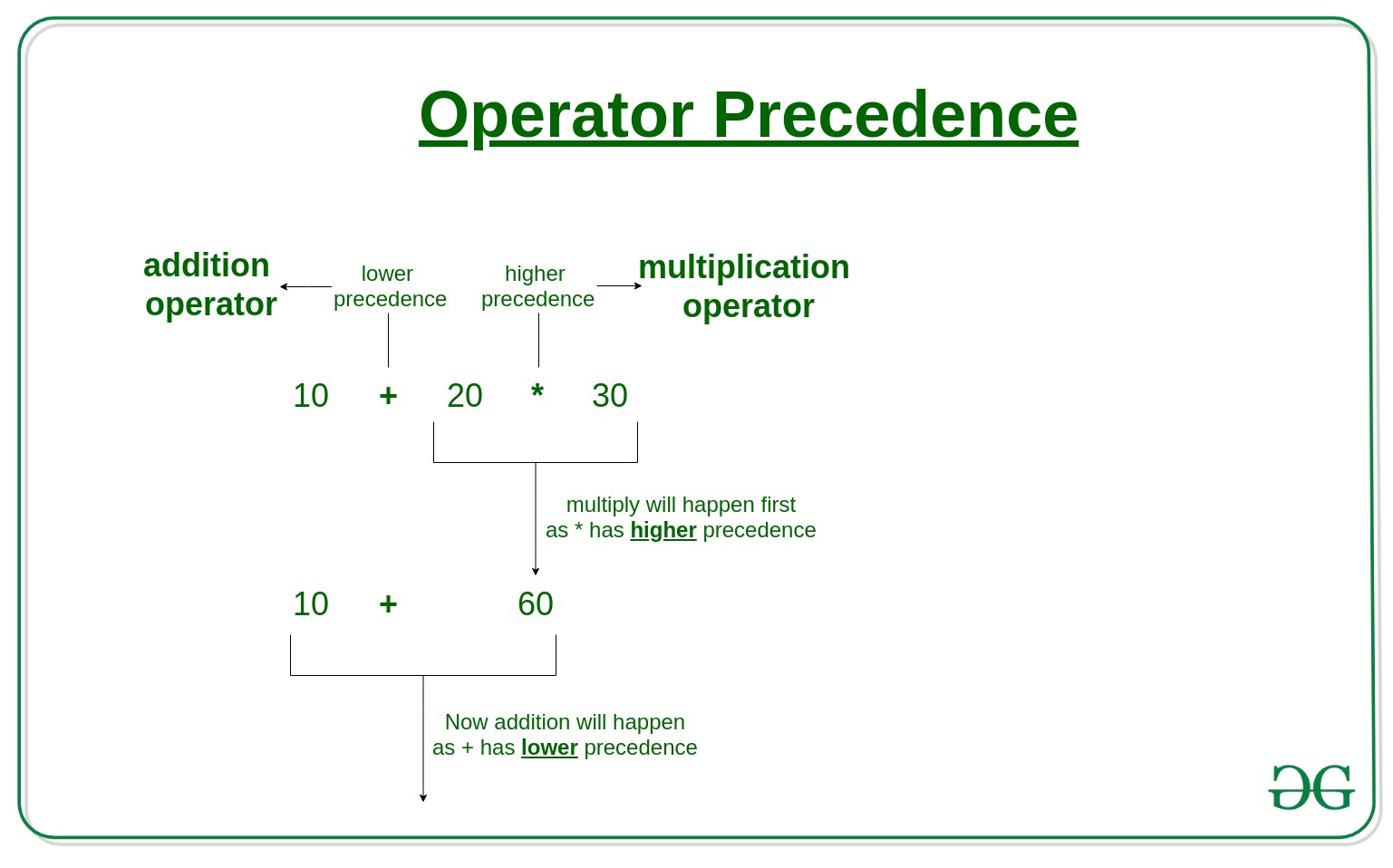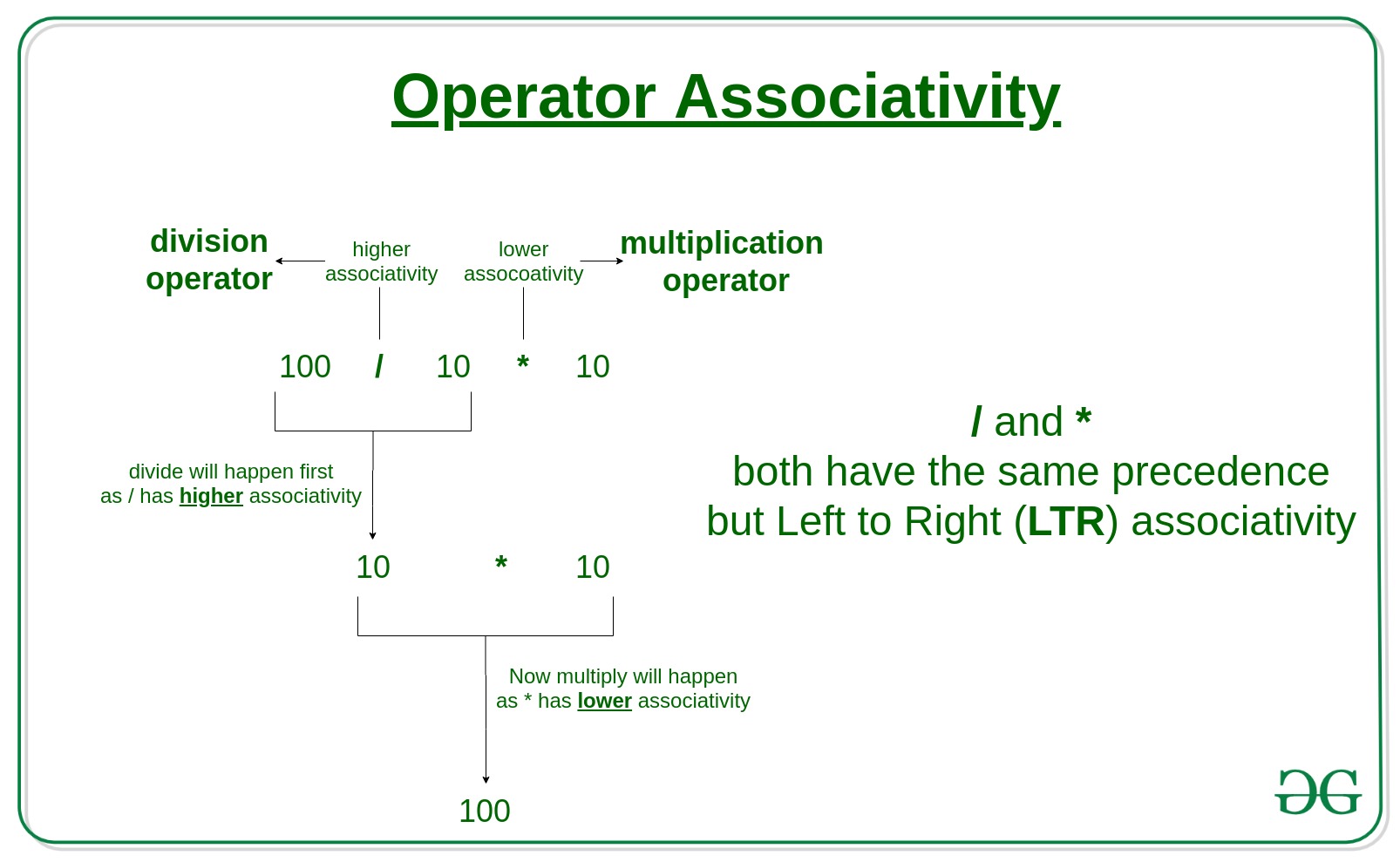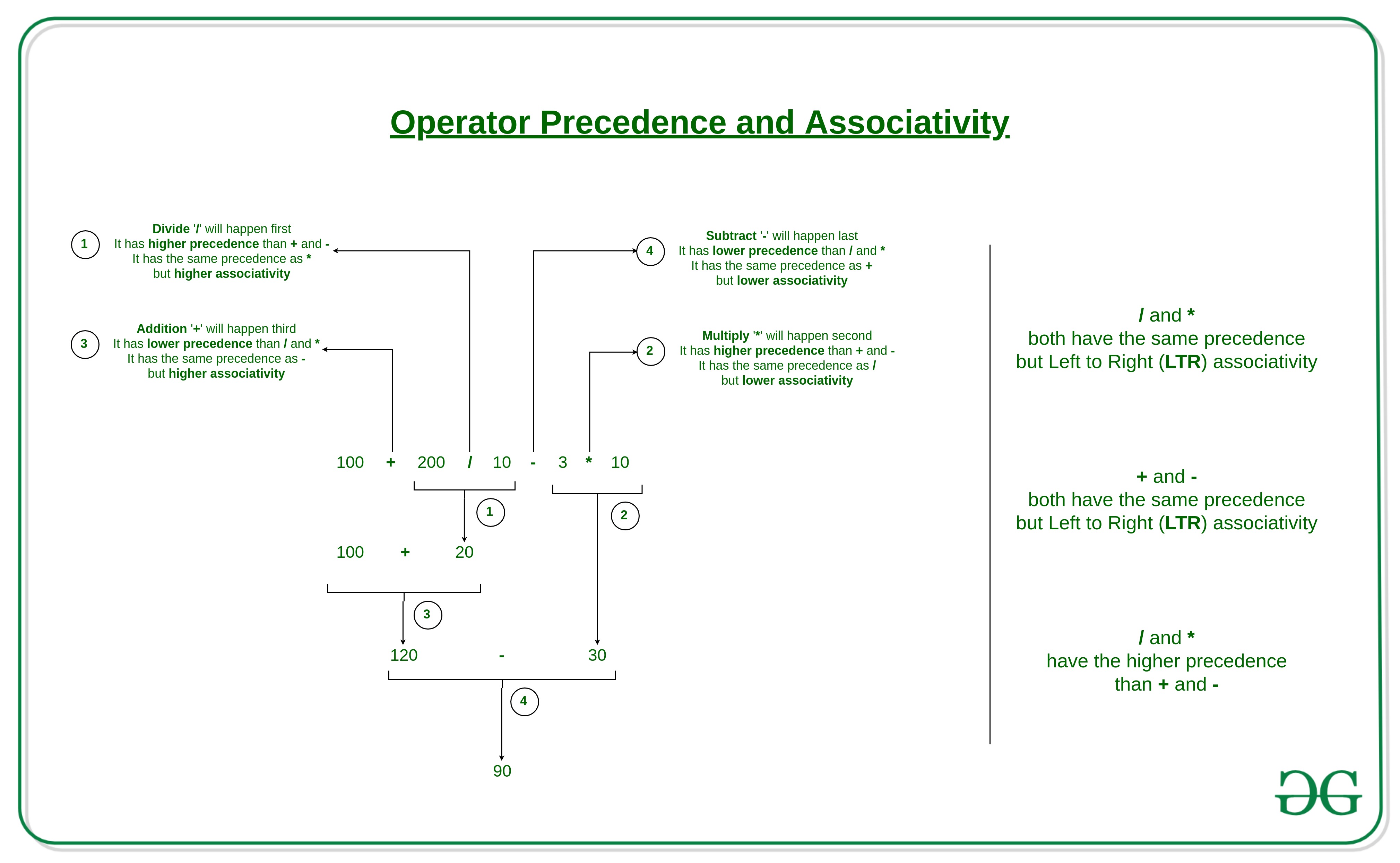Precedence and Associativity of Operators in Python
Last Updated :
01 Jul, 2023
In Python, operators have different levels of precedence, which determine the order in which they are evaluated. When multiple operators are present in an expression, the ones with higher precedence are evaluated first. In the case of operators with the same precedence, their associativity comes into play, determining the order of evaluation.
Operator Precedence and Associativity in Python
Please see the following precedence and associativity table for reference. This table lists all operators from the highest precedence to the lowest precedence.
|
1
|
() |
Parentheses
|
Left to right
|
|
2
|
x[index], x[index:index] |
Subscription, slicing
|
Left to right
|
|
3
|
await x |
Await expression
|
N/A
|
|
4
|
** |
Exponentiation
|
Right to left
|
|
5
|
+x, -x, ~x |
Positive, negative, bitwise NOT
|
Right to left
|
|
6
|
*, @, /, //, % |
Multiplication, matrix, division, floor division, remainder
|
Left to right
|
|
7
|
+, – |
Addition and subtraction
|
Left to right
|
|
8
|
<<, >> |
Shifts
|
Left to right
|
|
9
|
& |
Bitwise AND
|
Left to right
|
|
10
|
^ |
Bitwise XOR
|
Left to right
|
|
11
|
| |
Bitwise OR
|
Left to right
|
|
12
|
in, not in, is, is not, <, <=, >, >=, !=, == |
Comparisons, membership tests, identity tests
|
Left to Right
|
|
13
|
not x |
Boolean NOT
|
Right to left
|
|
14
|
and |
Boolean AND
|
Left to right
|
|
15
|
or |
Boolean OR
|
Left to right
|
|
16
|
if-else |
Conditional expression
|
Right to left
|
|
17
|
lambda |
Lambda expression
|
N/A
|
|
18
|
:= |
Assignment expression (walrus operator)
|
Right to left
|
Precedence of Python Operators
This is used in an expression with more than one operator with different precedence to determine which operation to perform first.
Example
10 + 20 * 30

10 + 20 * 30 is calculated as 10 + (20 * 30)
and not as (10 + 20) * 30
Python Code of the above Example
Python3
expr = 10 + 20 * 30
print(expr)
|
Output
610
Precedence of Logical Operators in Python
In the given code, the ‘if‘ block is executed even if the age is 0. Because the precedence of logical ‘and‘ is greater than the logical ‘or‘.
Python3
name = "Alex"
age = 0
if name == "Alex" or name == "John" and age >= 2:
print("Hello! Welcome.")
else:
print("Good Bye!!")
|
Output
Hello! Welcome.
Hence, To run the ‘else‘ block we can use parenthesis( ) as their precedence is highest among all the operators.
Python3
name = "Alex"
age = 0
if (name == "Alex" or name == "John") and age >= 2:
print("Hello! Welcome.")
else:
print("Good Bye!!")
|
Output
Good Bye!!
Associativity of Python Operators
If an expression contains two or more operators with the same precedence then Operator Associativity is used to determine. It can either be Left to Right or from Right to Left.
Example
In this code, ‘*’ and ‘/’ have the same precedence and their associativity is Left to Right, so the expression “100 / 10 * 10” is treated as “(100 / 10) * 10”.

Code
Python3
print(100 / 10 * 10)
print(5 - 2 + 3)
print(5 - (2 + 3))
print(2 ** 3 ** 2)
|
Output
100
6
0
512
Operators Precedence and Associativity in Python
Operators Precedence and Associativity are two main characteristics of operators that determine the evaluation order of sub-expressions in the absence of brackets.
Example
100 + 200 / 10 - 3 * 10

100 + 200 / 10 - 3 * 10 is calculated as 100 + (200 / 10) - (3 * 10)
and not as (100 + 200) / (10 - 3) * 10
Python Code of the above Example
Python3
expression = 100 + 200 / 10 - 3 * 10
print(expression)
|
Output
90.0
Non-associative Operators
In Python, most operators have associativity, which means they are evaluated from left to right or right to left when they have the same precedence. However, there are a few operators that are non-associative, meaning they cannot be chained together.
Example
Python3
a = 5
b = 10
c = 15
a = b = (a < b) += (b < c)
|
Output
a = b= (a < b) += (b < c)
^^
SyntaxError: invalid syntax
Please Login to comment...